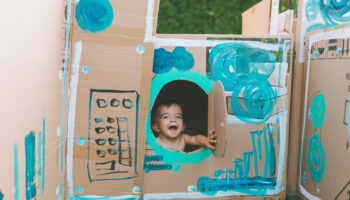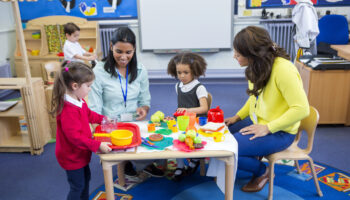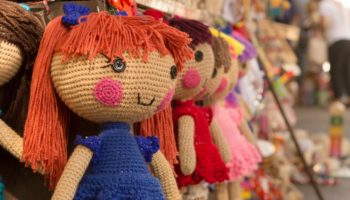by Natalie Grebe
Recently I attended a birthday party for a friend’s little boy named Cian. Cian was turning two and was all smiles as guests arrived and piled presents inside his red wagon. He mostly enjoyed playing with his cousins in the yard and luring his favorite “Grammie” to his sandbox to play alongside him. When it was time to open gifts, Cian’s mom sat with him on the patio. His dad passed over each gift and mom encouraged Cian to look at each card as she read it. Cian was fairly interested in opening the presents, and like most 2-year-olds, wanted each toy opened immediately.
Midway through the gifts Cian was given a present in a gift bag from his cousin. He eagerly pulled out the tissue paper and discovered a cute baby doll. Cian seemed unsure of the object, holding it away from his body and passing it almost immediately to his mom. Cian’s mom showed him how to hold the baby and told him it was a nice baby doll. His face remained slightly puzzled, but when mom offered the baby doll back to him, he took it.
Most of us know that children are often encouraged through social and cultural bias to play with specific types of toys. Girls are often given toys that focus on attractiveness and nurturing, while boys are offered cars and action heroes that can sometimes be more aggressive. Harvard psychologist William Pollack states that, “Male babies are actually more emotional and attached to their mothers than girls, but their natural gentleness is overwhelmed by social pressure to be strong and macho.” Pollack believes that if boys were encouraged from the start to be gentler and more sensitive, they would likely grow up to be nurturing fathers.
The toys that children play with are largely influenced by parents, their peers, and the media. A child’s physical and social environment can impact their comfort level and influence corresponding activities. As teachers, you can provide a variety of toys and encourage the children, whether boy or girl, to play with all of them. Since children seem to develop more of a gender-identity during the preschool years, it is important for those working with infants and toddlers to provide this exposure. A study completed by Fagot, Rodgers, & Leinbach in 2000 states, “Children might be encouraged, through socialization pressures such as modeling and reinforcement, to prefer same gender-related toys, and the effects of this socialization may accumulate as they get older.” Letting children explore and interact with all types of toys from a very early age will strengthen their willingness to continue to play with such toys as they move to preschool and school-age.
As the gift opening continued, Cian remained very interested in the baby doll. He enjoyed taking the pacifier from the baby and giving it back to him, removing the hat, and even let the doll “help” him open his other presents. It was especially interesting to me that even when opening a toolbox, Cian remained much more interested in his new doll.
By making all types of toys available to infants, toddlers, and preschool-age children and refraining from using phrases like “girls don’t play with cars” or “boys don’t like pink,” we can help children to develop their diverse skills and interests and become well-rounded children.
Resource:




